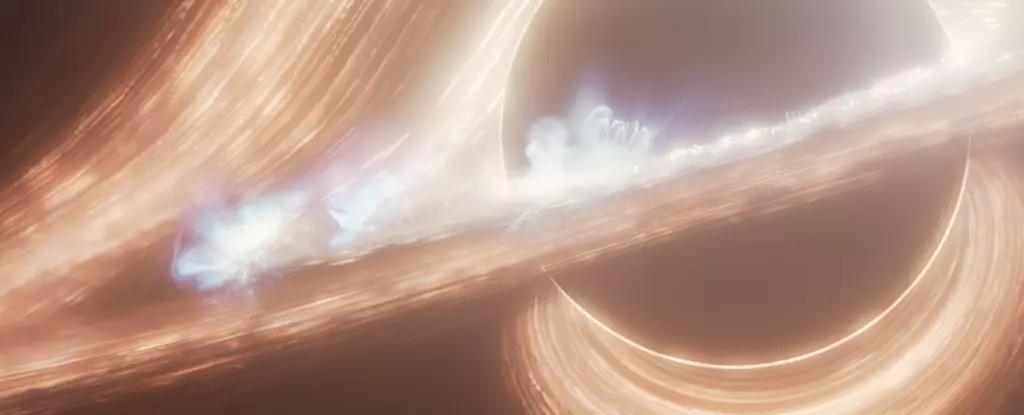Recent advancements in astrophysics have vastly improved our understanding of the supermassive black hole at the core of the Milky Way galaxy, known as Sagittarius A* (Sgr A*). While it may not exhibit insatiable consumption of cosmic matter like its larger counterparts scattered across the universe, new data harnessed from NASA’s James Webb Space Telescope (JWST) reveals dynamic and energetic phenomena surrounding this celestial giant. A recent study published in *The Astrophysical Journal Letters* highlights the presence of enigmatic cosmic flares emanating from the accretion disk of hot gas surrounding Sgr A*.
Understanding the surrounding environment of a supermassive black hole provides valuable insight into its nature and influence. This latest research reflects upon a series of observations made by a collaborative team led by Farhad Yusef-Zadeh from Northwestern University. The researchers employed JWST’s Near-Infrared Camera to observe Sgr A* for a total of 48 hours, segmented into sessions lasting eight to ten hours. Their findings revealed a highly variable activity pattern that challenges previous notions of sustained accretion behavior.
The dramatic results of this investigation shed light on the surprising volatility around Sgr A*. The team reported the detection of approximately five to six significant flares occurring daily, along with numerous minor bursts scattered throughout. This established a pattern of activity that, according to Yusef-Zadeh, disrupted expectations, as the researchers had initially anticipated somewhat stable behavior. Instead, the observations revealed an ever-changing cosmic spectacle akin to a bubbling pot that irregularly erupts, offering no predictable rhythm.
These cosmic fireworks highlight an intriguing aspect of black hole physics. The flares emitted are believed to be the result of various processes linked to the dynamics of the accretion disk. Researchers postulate two primary mechanisms: the turbulence present within the disk potentially leading to smaller flares, and the striking magnetic reconnection events that may account for the more substantial bursts.
Turbulence within the accretion disk compresses the hot, magnetized gas, creating disturbances analogous to solar flares. This comparison provides a relatable context for understanding black hole activity despite the extreme conditions that prevail in their vicinity. Furthermore, the energetic environment around black holes escalates the intensity of such magnetically driven phenomena, making them far more chaotic than those around stars like our Sun.
Additionally, the larger flares may originate from magnetic reconnection events, which occur when intersecting magnetic fields release energy and lead to the ejection of particles traveling at relativistic speeds. Yusef-Zadeh likens these powerful bursts to static electricity discharges, emphasizing the violent nature of such interactions near a black hole.
Another remarkable finding from the study involves the variances in brightness observed at different wavelengths. The research team discovered a subtle time delay between flare emissions observed at shorter wavelengths and those at longer wavelengths. This observation may imply that the energetic particles emitted by flares deplete energy more rapidly at shorter wavelengths, serving as a guide to understanding the intricate processes occurring in the vicinity of the black hole.
The implications of these findings are profound for future research surrounding black holes. The researchers plan to secure extended observation time with the JWST, which will allow for enhanced data collection and a more comprehensive understanding of the flaring phenomena. Reducing the noise inherent in observations of such fleeting events is crucial for discerning previously inconspicuous features.
The ongoing exploration of Sagittarius A* offers invaluable insight into the behavior of black holes and their surrounding environments. While these cosmic giants remain enigmatic, the observations from JWST provide exciting new avenues for understanding their complex physics. As astronomers continue to unravel the dynamics of Sgr A*, we learn not only about our galaxy’s core but also about the broader cosmic fabric in which these astronomical phenomena reside.


Leave a Reply